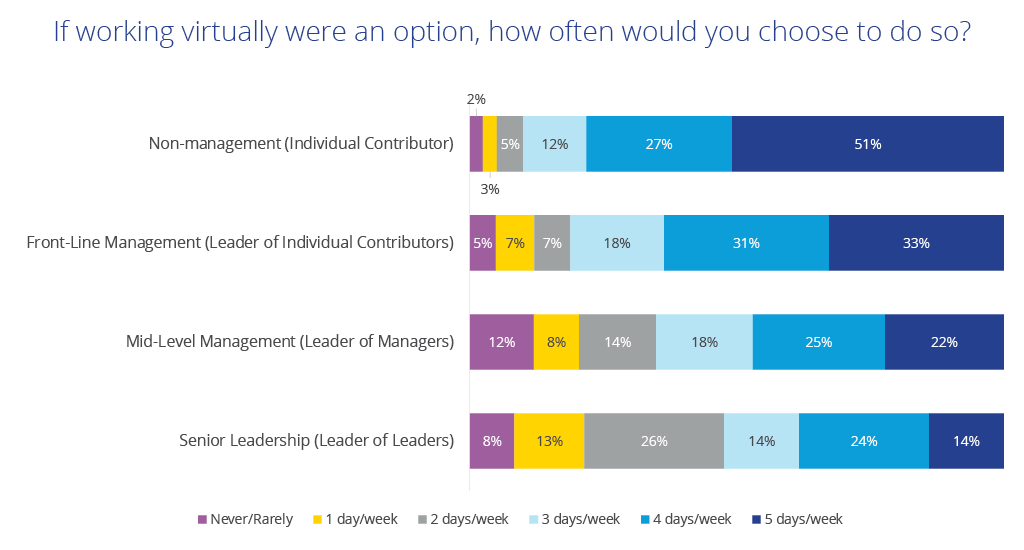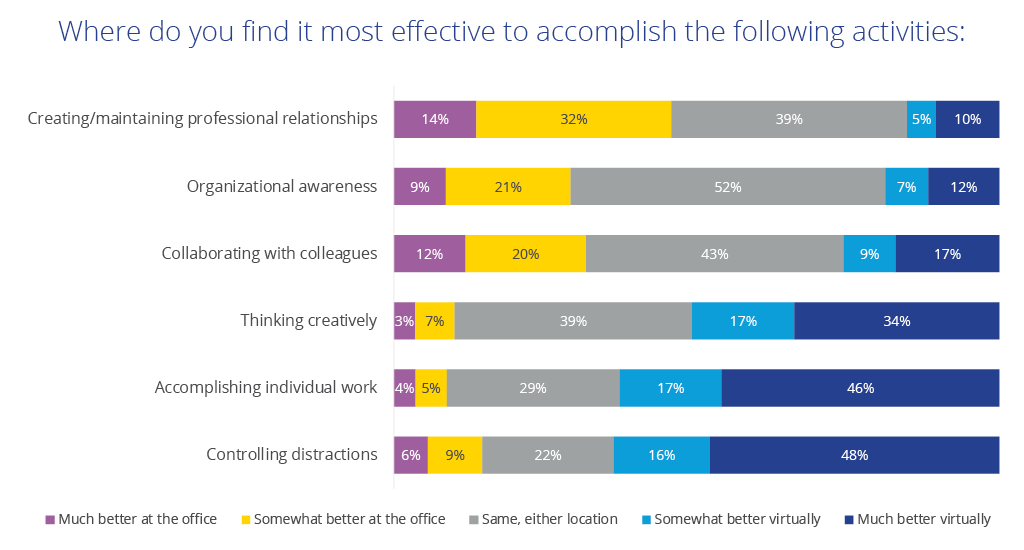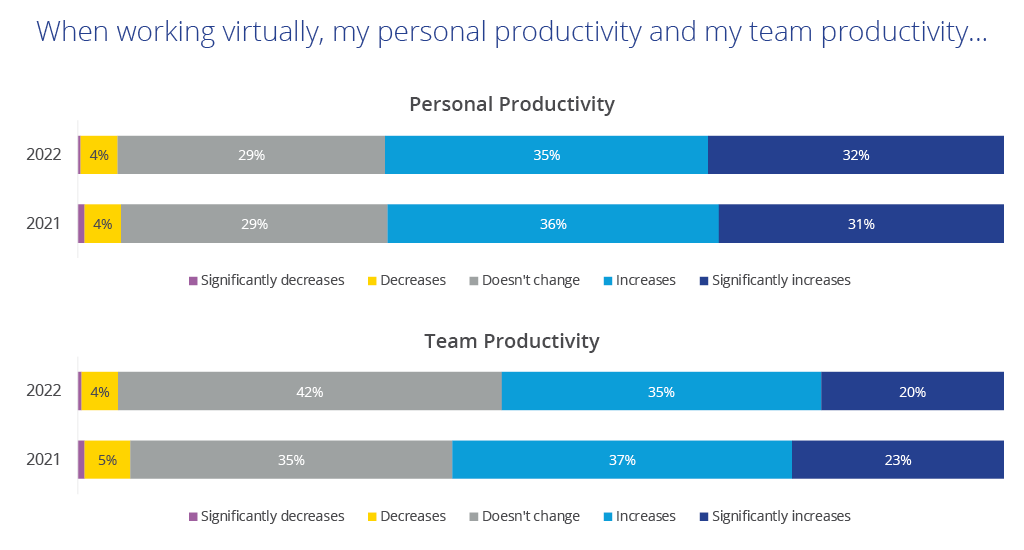The last three years have been one big work experiment. Many employees worked from home regularly for the first time. In fact, the share of time spent working from home (versus the office) increased six-fold during the heart of the pandemic, equivalent to 40 years of work-from-home adoption in less than three years[1]. The results of this work-from-home experiment have been largely net-positive from an employee perspective; however, not everyone agrees. Senior leaders are still ambivalent about virtual work long-term, which puts most companies at a crossroads. Companies are “picking a camp” in the great debate on virtual work vs. in-office work, some trying to bring employees back together in the office and others embracing a more virtual-first approach.
But why is the question framed as “either/or” between a return to office and continuing virtual work? Most white-collar employees will likely fall somewhere in the middle, so what if, instead, we framed the question as “yes, and” when we discuss the future of work, both virtual and in-person? Companies that are successful in creating future work strategies understand where there is misalignment between their employees and leadership and take a more intentional approach to address these areas.
Enthusiasm for Virtual Work has Hit Equilibrium
Enthusiasm for virtual work is not going away. Employees perceive their personal productivity to increase when working virtually and they want to work from home now more than ever, just under four days per week on average. While both data points have trended upwards since 2020, the data appears to be stabilizing, suggesting we may have hit an equilibrium point on virtual work enthusiasm, albeit a major net gain for virtual work compared to pre-pandemic rates. But what aspects of work, specifically, do employees find better at home or in the office?
[1] “The Future of WFH” report by Nick Bloom (Stanford)

In some areas, the data is exactly what one might expect. For example, working virtually is highly preferred over the office for controlling distractions and accomplishing individual work; however, working virtually is less conducive to creating and maintaining professional relationships. In other areas, however, the data defies conventional logic. Over half of all employees feel they are more able to be creative working virtually. While confounding to some, we have heard from employees qualitatively that working virtually allows them the time and space to be creative and psychologically safe in a way they did not necessarily feel in the office. Perhaps most surprisingly, there is not a single activity that is definitively better at the office. Instead, for most activities, the most common response is the “same, either location,” which suggests hybrid is here to stay. Then why, lately, are so many companies electing for a return to office reminiscent more of 2019 than 2020-2022?

Response from Leadership
While working virtually has been a boon for employee flexibility, it has proven challenging for mid-level and senior-level leaders. Less than half of mid/senior-level managers agree they can “enhance team cohesion” or “onboard new members successfully” when managing virtually, which helps explain why their perception of virtual team productivity continues to trend downward year-over-year. While this could be interpreted as teams unraveling over time due to virtual work, the reality is more complicated than that.
Adopting a virtual-first working arrangement requires a change in management style and, in many cases, company operating model that many leaders are not ready for. Working virtually prevents leaders from easily managing by sight, the most commonly accepted “input” of productivity (i.e. “I see the employee working in the office; thus I know they are being productive”). Instead, managers must manage by outputs and results when working virtually, which inherently requires trust, effort, and creativity. Put differently, most leaders do not see the benefits of a virtual-first strategy worth the effort required to do it well, especially when many still see a purpose to the office.
The Motivations Driving Workers’ Return to the Office
Connecting with colleagues, sense of community, collaboration, and programmed team bonding will be the most compelling reasons why employees come back to the office. Perhaps Jared Spataro, VP of Modern Work at Microsoft, put it best when he said, “in-person connections [are] bigger than tacos.”
Offices will likely shift towards a more flexible, hospitality-driven design that prioritizes employee engagement, connection, and well-being. Regularly planned programming throughout the week, such as team lunches, celebrations, and competitions will become more commonplace as employee engagement becomes more intentional. Well-being will also be reflected in office design, prioritizing access to natural light, outdoor spaces, biophilia, and circadian lighting. The challenge for companies is providing all this while striking a balance with employee appetite to work from home.
One size does not fit all, both at the individual level and company level, which is why there is such a wide range of approaches to virtual work policy. Employees want to work from home, and virtual work is likely to be a significant part of the future of work; however, even the most virtual-first companies acknowledge the value of periodically gathering in person, oftentimes holding quarterly or annual team gatherings. The office still has a purpose for many, and it must adapt to the higher expectations employees developed over the last three years.

 Colliers Insights Team
Colliers Insights Team



 Sheena Gohil
Sheena Gohil Bob Shanahan
Bob Shanahan Dougal Jeppe
Dougal Jeppe Kai Shane
Kai Shane
 Bret Swango, CFA
Bret Swango, CFA Michelle Cleverdon
Michelle Cleverdon
 Aaron Jodka
Aaron Jodka